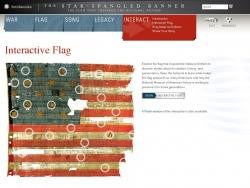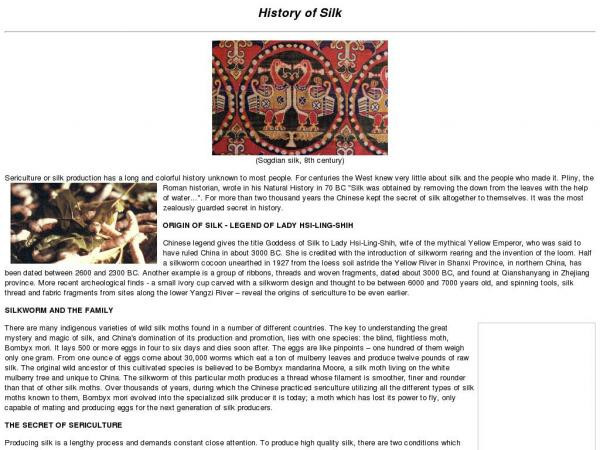Kate Harris
Social Studies teacher
Pittsburgh CAPA
Middle School (13 to 15 years old), High School (16 to 18 years old)
Teacher/Educator
Language Arts And English, Civics, Literature, Cultures, Economics, Social Studies, Geography, Writing, US History, Arts, Other
I'm a history-lover, art fan, and bookworm. I taught high school history (U.S. History and World Religions) for ten years in North Carolina, teach currently in Pittsburgh, PA, and am working to help teachers make the most of this new resource!
Kate Harris's collections
Dogs in History
An ongoing, and mostly for fun, collection representing how our furry friends have been appreciated throughout history.
 Kate Harris
Kate Harris
23
Do our national symbols accurately reflect our nation?
<p>After the War of 1812, a set of new national symbols were revered. These symbols, including the flag and the song that would be come the national anthem, demonstrated a sense of pride in a nation that had now defeated the British twice and would be an experiment in liberty and freedom. Use the items in this collection to learn about the history of these symbols. Do they accurately reflect the ideals of the nation in the early 19th century? Do they accurately reflect the realities of life in the nation at that time?</p>
<p>Lately, the national anthem and athlete protests during the anthem have been the subject of some controversy. What are your personal feelings about the flag and/or anthem? Consider how learning the historical background of the song might impact your opinion on these anthem protests. </p>
 Kate Harris
Kate Harris
11
3-D Resources from the Smithsonian
<p>This collection provides an introduction to the 3D resources available from the Smithsonian Institution. All of the items in this collection are videos showing 3D models or sharing the process of creating such materials. To explore the models directly in a 3D viewer, download file information, and discover tours and other educator resources, please visit <a href="http://3d.si.edu" target="_blank">3d.si.edu</a>.</p><p>Models of interest to K-12 teachers might include:</p><ul><li>Apollo 11 command module</li><li>Amelia Earhart's flight suit</li><li>Liang Bua (archaeological site where <em>homo floriensis</em> was discovered)</li><li>Funerary bust of Haliphat (from Palmyra)</li><li>Jamestown burial sites and artifacts</li><li>David Livingstone's gun</li><li>Porcelain dishes and other home items in the Freer Gallery of Art (from Asian cultures)</li><li>Killer Whale Hat</li><li>Whale and dolphin fossils</li><li>Cosmic Buddha</li><li>Woolly mammoth skeleton</li><li>Wright Brothers flyer</li><li>Gunboat Philadelphia</li></ul>
 Kate Harris
Kate Harris
19
Earl Hines: An Innovative Jazz Musician
<p>Earl Hines embodies the innovator mindset because he was experimental, collaborative, resilient and resourceful. He invented a new style of playing the piano and became well-known for his work with other jazz musicians. As you look through this collection, try to find more examples of his innovator mindset. </p><p>For more on the characteristics that make up an innovator, look at the Heinz History Center website. You can even take a quiz and find out what innovator you are most like:</p><p><a href="http://www.heinzhistorycenter.org/education/school-programs-k-12/steam/innovator-match-up">http://www.heinzhistorycenter.org/education/school...</a></p><p>tags: Pittsburgh, Chicago, jazz, segregation, music</p>
 Kate Harris
Kate Harris
16
Ekphrastic Poetry Lesson
<p>According to <a href="https://www.poetryfoundation.org/resources/learning/glossary-terms/detail/ekphrasis" target="_blank">the Poetry Foundation</a>, "An ekphrastic poem is a vivid description of a scene or, more commonly, a work of art. Through the imaginative act of narrating and reflecting on the "action" of a painting or sculpture, the poet may amplify and expand its meaning"</p><p>This collection is based on a lesson plan from the Smithsonian American Art Museum, which guides users through the process of using artwork to inform and inspire poetry. Strategies for developing original poems, sample ekphrastic (art-inspired) poems, and suggested artworks are included to stimulate thinking.</p><p>tags: creative writing, art, poetry, poems</p>
 Kate Harris
Kate Harris
9
Emmett Till: Confronting a Difficult History
This collection looks at how a tragic incident like the murder of Emmett Till is remembered in American history and national memory, as well as the significance of the decision of Till's mother, Mamie Mobley-Till, to share her son's loss publicly with an open-casket. Her actions created a galvanizing moment for the modern civil rights movement, heightening its significance and influence. The collection includes photographs, art work, and two newspaper articles about modern memorials to Till and other lynching victims.
Teachers might use the following images as the basis for silent discussion (see the Big Paper strategy from Facing History, included on the last resource) prior to a group conversation on the following questions:
-How did this case impact the civil rights movement?
-What were the effects of having an open casket at Till's funeral? How does media continue to impact the civil rights movement?
-How should Emmett Till be remembered and honored? How should his mother be remembered and honored?
-Should national memorials and museums include objects like Till's original casket or the soil from lynching sites? Why or why not?
 Kate Harris
Kate Harris
6
Exploring American Ideals in Art
<p>How can American ideals be defined and expressed in different ways? The United States of America is associated the ideals of Democracy, Rights, Liberty, Opportunity, and Equality. Those values have served as sources of inspiration for artists as goals that the nation aspires to (even if they are not always achieved). This collection contains artworks inspired by one or more of the ideals listed above. Students should choose a work and identify which ideal it relates to: Democracy, Rights, Liberty, Opportunity, and Equality. </p><p>In a short essay based on the artwork, students should answer the following questions:</p><p>-How would the student define Democracy, Rights, Liberty, Opportunity, or Equality?</p><p>-What is the artist trying to communicate about how this idea plays out in America?</p><p>-Does the student agree or disagree with the artist's interpretation?</p><p>If desired, students could create their own artwork based on one of the American ideals.</p>
 Kate Harris
Kate Harris
21
Fighting World War II at Home
<p>Preparing for World War II in the United States meant uniting the nation and encouraging citizens to support the war with their actions and funds. However, it also created divisions within the nations, as Japanese-Americans were interned, African-American soldiers were segregated, and Mexican workers recruited to help with war-time demands were discriminated against. This collection includes objects reflecting a variety of aspects of homefront life during World War II and works well as an independent activity for students to complete. </p>
<p>Guiding questions for discussion before and after include:</p>
<p><strong>-In what ways did World War II unite the nation? In what ways did it divide the nation?</strong></p>
<p>-What new opportunities were created by the need for more workers in World War II?</p>
<p>-How and why did government regulation of the economy increase during World War II?</p>
<p>-Why do you think the examples of propaganda in this collection were so effective?</p>
 Kate Harris
Kate Harris
26
Flexing the 14th Amendment
<p>As part of the AP US Government and Politics course, students learn how the “Fourteenth Amendment’s equal protection clause as well as other constitutional provisions have often been used to support the advancement of equality.” They are also asked to explore how individuals and groups help protect civil liberties and civil rights; another standard notes that “Public policy promoting civil rights is influenced by citizen-state interactions and constitutional interpretation over time.”</p>
<p>This collection invites students to explore that process by learning more about the local and national history of the disability rights movement, and then imagining how future movements could build and expand on both the 14th Amendment and the Americans with Disabilities Act. In a typical AP US Government and Politics course, this could be taught as part of an introduction to Unit 3 (which addresses Civil Rights and Civil Liberties). </p>
<p>It is designed as two 70 minute lessons with possibilities for extension, to be used in a remote learning or physical classroom environment. The first day's lesson could be spent on the warm up and completing the timeline tracker, while the second day leaves time for discussion and possible further research. </p>
<p>#civicdiscourse</p>
 Kate Harris
Kate Harris
28
From Ancient India to a Studio Near You: Yoga's History
<p>This collection explores yoga's roots in ancient India and how its practice has changed as it has migrated to the West. There are questions embedded throughout the collection, which includes readings, images, links to outside websites, video, and a podcast. </p><p>Essential questions ask:</p><p>What are the roots of the practice of yoga? </p><p>Who claims to have invented it and what were the original goals?</p><p>How did it make its way to the western world and how has it changed through that process?</p><p>Tags: Hindu, Hinduism, India, religion, exercise</p>
 Kate Harris
Kate Harris
13
From Silk Worms to the Silk Road
This is a collection of resources that could be used to support a lesson on the discovery of silk and the impact of the silk road(s). Artifacts include images of silkworms and the silk-making process, websites with information about the luxuries traded on the Silk Road, and video summary.
Possible guiding questions include:
-Why did silk become such an important commodity in China?
-How did the development of the silk trade routes impact both Europe and Asia?
-In what ways do artifacts from Europe and Asia reveal the cultural connections created by the Silk Road?
 Kate Harris
Kate Harris
19
Geometry and Islamic Art
<p>This is a collection of artifacts representing geometric motifs in Islamic art. Students will learn why these complex patterns are so prevalent in Islamic art, practice spotting different types of patterns, and begin to create their own, using just a ruler and a compass. They will also have an opportunity to explore the concept of tessellation using an interactive tool.</p><p>tags: geometry, circle, angle, star, mosque, mihrab, tile, Muslim, Islam, religion</p>
 Kate Harris
Kate Harris
16







